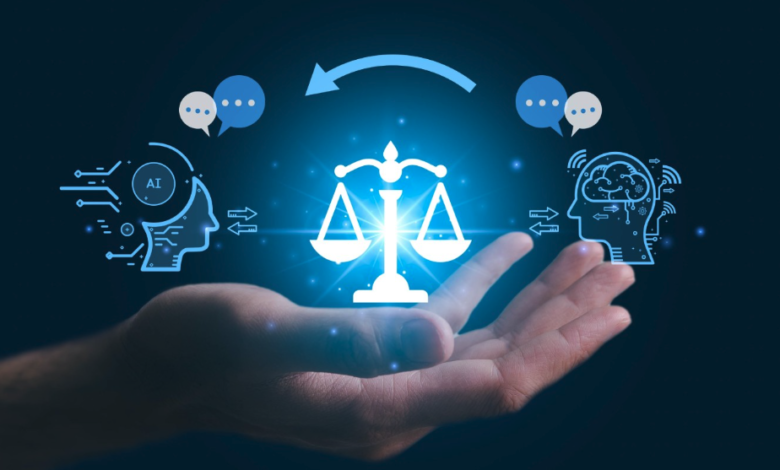
The emergence of Generative Pre-trained Transformer (GPT) models has democratized Artificial Intelligence (AI), making advanced language processing and generation capabilities accessible to a wider range of users and applications than ever before. GPT models empower both individuals and enterprises to explore AI for various purposes beyond predefined tasks, from generating natural language text to automating customer service interactions, revolutionizing industries, and unlocking new possibilities for innovation.
In 2023, one-third of respondents to a McKinsey survey said their organizations regularly use GenAI, indicating widespread adoption. About 40% of those already using AI expect increased investment due to GenAI, with 28% mentioning it’s on their board’s agenda. Common functions utilizing GenAI mirror those where AI is most prevalent: marketing, sales, product development, and service operations like customer support. This implies organizations are leveraging these tools where they perceive the most value. It also means they need to be ready for any potential downsides.
Globally, GenAI is expected to become a USD 1.3 trillion market by 2032, and investments into the technology are expected to drive growth in the training infrastructure of large language models (LLMs), with a gradual transition toward inference devices for LLMs, digital advertising, specialized software, and services in the medium-to-long term. GenAI marks a significant democratization of AI capabilities, transcending the confines of research labs to permeate everyday public use and business operations. For enterprises looking to incorporate GenAI technology into their organizations, it is essential to have a roadmap for responsible adoption.
Understanding the need for a roadmap in GenAI adoption
Inaccuracy stands out as the most commonly identified risk associated with GenAI. While GenAI holds promise, enterprises need to recognize potential risks. GenAI models often demand substantial data volumes, posing security risks if not handled properly. Employee utilization of GenAI with sensitive data can result in breaches. GenAI may perpetuate biases inherent in its training data, potentially leading to discriminatory outcomes and damage to reputation. Without adequate training and monitoring, GenAI outputs like chatbot responses can be offensive or even harmful.
Overreliance on GenAI outputs, especially in financial decision-making, may lead to flawed reasoning and critical information oversight due to potential hallucination effects. Lack of transparency in GenAI decisions can also complicate error identification and accountability. These risks, however, can be addressed through strategic planning and protective measures. Enterprises must establish a robust foundation in AI literacy, data governance, and ethical frameworks at the time of adoption.
This would require enterprises to strategize and build roadmaps for responsible AI adoption, focusing on data quality and bias mitigation. They will also have to work towards implementing robust testing and validation procedures, develop clear metrics for success, and monitor performance. A feedback loop where AI outputs are reviewed and used to refine the model ensures accuracy is fundamental even as data and circumstances evolve. Establishing a culture of continuous improvement, therefore, is vital.
The move toward smaller, purpose-built GPT models
Generative models were initially massive and required significant resources to build and operate. The GenAI landscape has since evolved with the development of smaller, task-specific models that can be trained at a fraction of the cost and run on less powerful hardware. This shift has democratized both the ability to run and build these models.
It’s essential to recognize that democratization goes beyond merely running and constructing models; it also entails accessibility to fine-tuning capabilities. Tech industry giants, known as hyperscalers, have played a pivotal role in this democratization by offering readily available fine-tuning services. This move has substantially lowered barriers to entry, allowing individual employees to utilize platforms like AWS for model fine-tuning without requiring extensive resources or funding. As a result, customizing and optimizing models has been democratized, facilitating a smoother path toward responsible GenAI adoption.
Ethical and regulatory considerations
Ethical and regulatory considerations are crucial in AI development, to ensure responsible use, mitigate risks, and maintain legal standards. For example, if a pharmaceutical company utilizes GenAI to draft Food and Drug Administration (FDA) compliance reports, researchers and scientists are responsible for the task. To ensure accuracy and compliance, the company must consider implementing certain guardrails and employ technology to maintain grounding and traceability in the generated outputs. Such an approach enables adherence to regulatory requirements and ethical standards in report generation processes.
Responsible AI frameworks emphasize fairness in data and outcomes, requiring tools to mitigate biases and ensure transparency. While interpretability is challenging in GenAI due to neural networks’ complexity, grounding techniques can help maintain context adherence. Providing the data sources influencing outcomes enhances traceability. These measures demonstrate methods to introduce transparency into GenAI decision-making.
Accountability is also critical to AI development, necessitating evaluation frameworks for accuracy and consistency. Involving human oversight can further help mitigate accountability concerns in high-stakes decisions. Ethical considerations extend to data sourcing, with an emphasis on using openly licensed data for more ethical training. Even when utilizing AI outputs, ethical obligations persist, such as attributing the sources. Tools facilitating citation of sources and organizational policies for open-source compliance help address these ethical considerations. Ethical and regulatory compliance should be integrated into AI development to ensure responsible outcomes.
The integration of AI into organizational workflows presents multifaceted challenges. However, by navigating these challenges thoughtfully and responsibly, organizations can leverage the transformative potential of AI while simultaneously mitigating risks and ensuring ethical compliance. This approach forms the foundation of a roadmap for responsible GenAI adoption, where ethical considerations are prioritized alongside technological advancements. Enterprises must take the first step towards developing an AI governance framework, educating their workforce, and exploring how GenAI can benefit their organization while safeguarding against potential risks.



